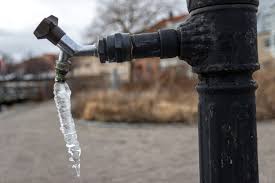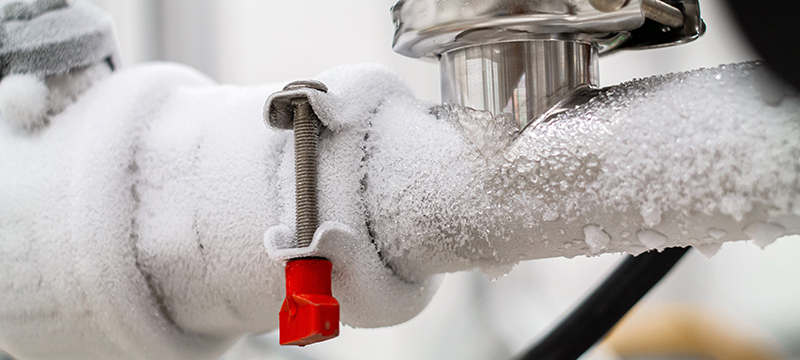Ingenious Strategies to Maintain Your Pipes in Cold Weather
Ingenious Strategies to Maintain Your Pipes in Cold Weather
Blog Article
Are you trying to find info around Prevent Freezing and Bursting Pipes?

All homeowners that live in warm climates should do their ideal to winterize their pipes. Failing to do so can spell disaster like icy, broken, or ruptured pipelines.
Attempt a Hair Dryer or Warm Weapon
When your pipelines are virtually freezing, your trusty hair clothes dryer or warm weapon is a godsend. If the warm towels do not help remove any settling ice in your pipelines, bowling hot air directly into them may help. Do not use various other items that create direct flames like a blow lantern. This can cause a bigger disaster that you can not regulate. You may end up destructive your pipelines while trying to melt the ice. And over time, you might even wind up burning your home. So beware!
Open Up Cupboard Doors Hiding Plumbing
When it's chilly outside, it would be useful to open up cabinet doors that are masking your pipelines. Doing this little trick can maintain your pipes warm and restrict the potentially harmful outcomes of freezing temperature levels.
Take Time to Wrap Exposed Pipes
One easy and also clever hack to heat up icy pipes is to cover them with warm towels. You can cover them initially with towels. After protecting them in place, you can pour boiling water on the towels. Do it slowly to let the towels absorb the liquid. You can also utilize pre-soaked towels in hot water, just don't forget to use safety handwear covers to secure your hands from the heat.
Activate the Faucets
When the temperature decreases and it appears as if the frigid temperature will last, it will aid to activate your water both inside your home and also outdoors. This will maintain the water flowing with your plumbing systems. Furthermore, the movement will certainly slow down the freezing procedure. Significantly, there's no requirement to transform it on full force. You'll wind up squandering gallons of water in this manner. Instead, aim for about 5 drops per min.
When Pipelines are Frozen, shut Off Water
Turn off the main water shutoff instantly if you notice that your pipes are totally frozen or almost nearing that phase. You will typically discover this in your cellar or utility room near the heater or the front wall closest to the street. Turn it off as soon as possible to prevent further damages.
With more water, even more ice will stack up, which will eventually lead to rupture pipelines. If you are unsure about the state of your pipes this winter, it is best to call an expert plumber for an assessment.
All house owners who live in warm climates must do their best to winterize their pipes. Failing to do so can mean catastrophe like icy, split, or ruptured pipelines. If the warm towels do not aid dislodge any type of resolving ice in your pipelines, bowling hot air straight into them might help. Turn off the primary water shutoff immediately if you observe that your pipes are completely icy or nearly nearing that phase. With more water, more ice will pile up, which will at some point lead to break pipes.
PREVENT YOUR PIPES FROM FREEZING THIS WINTER
A Leading Cause of Property Damage
When the weather is taking a deep nose dive into the cold dreary days, the risk of your pipes freezing and potentially bursting skyrockets. Unfortunately, during these cold dreary months, burst pipes are the most common denominator for property damage. The pipes that are most at the risk are those that are in areas where it is most cold in your home. For instance, pipes located in interior places such as basements, attics, and your garage. Unfortunately, that doesn’t mean that the pipes running through your cabinets or exterior walls can’t freeze. Good news, however, is that you can do things to help prevent pipes from freezing.
How to Prevent Pipes From Freezing
Once the temperature starts to drop during the winter, you should be taking the proper measures needed to ensure that your pipes stay warm and that there is circulation of water through them. Some steps that experts may recommend could go against your better judgement when it comes to saving water and heat. However, it would go without saying that when expenses are compared, damaged pipes could put a bigger dent in your wallet than a water bill.
What Can I Do?
Keep your garage door closed. This is very important, especially if you have water supply lines running through your garage. Open your kitchen and bathroom cabinets to allow warm air to circulate through them. Allow air circulation throughout your home. Keeping the interior doors open will once again allow the warm air to circulate inside your home. Ensure your thermostat is running the same temperature throughout the night and day. If you plan to be away from home during the cold months, set your temperature no lower than 55° F. This should provide enough heat to keep the pipes warm and prevent any remaining water inside the pipes from freezing. For more of a long-term solution, add insulation to attics, basement, and other crawl spaces around your home. By allowing your faucet to drip, it will alleviate pressure in the system. This is important because the pressure that is created between the blockage and the faucet can potentially cause the pipes to burst. Allowing the faucet to drip will prevent the pressure from building up, therefore keeping the pipes from bursting. Seal any cracks, openings, and crawl spaces around your home to prevent cold air from coming inside. This keeps your pipes-not to mention your home-warmer and less susceptible to issues caused by freezing temperatures. For the pipes in your home that are easily accessible, applying electrical tape to them might prevent them from freezing over. This is a quick fix, as you can apply the tape directly to the pipe. There are two options for heating tapes. One turns on and off by itself when it senses heat is needed. The other type of heating tape needs to be applied when heat is needed and removed when not necessary. If you have exposed pipes in your home, you can check this website to take a look at a few options that would be available at a shop near you.

I found that post on Prevent Freezing and Bursting Pipes when looking around the search engines. So long as you appreciated our page please don't forget to pass it around. Thank you so much for your time invested reading it.
Call now! Report this page